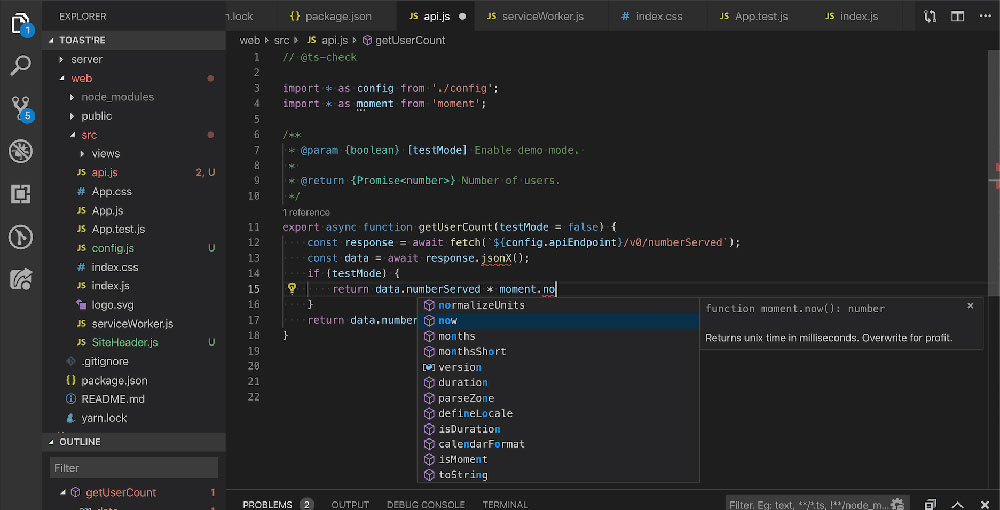Removing the Last Element with JavaScript Array.pop() Method

Diving into the core functionalities of the JavaScript Array.pop() Method unlocks a myriad of possibilities for array manipulation in web development.
This method is crucial for efficiently managing array elements, from removing the last item to enhancing stack operation workflows.
It serves as a foundational skill for both aspiring and seasoned developers looking to refine their coding techniques and optimize data handling in various JavaScript environments.
Understanding the pop() Method
Definition and Basic Functionality

The pop() method is a staple of array manipulation in JavaScript, specifically used to remove the last element from an array. This operation transforms the array directly, affecting the array’s length and composition by reducing it by one element each time it is called.
A key aspect of this method is its return value. When invoked, pop() returns the element that has been removed from the array.
This is particularly valuable in programming scenarios where you need to retrieve and use the discarded element, whether it’s for processing stack operations in JS based on a Last-In-First-Out (LIFO) model, or simply for verification purposes.
Syntax and Parameters
The general syntax used is quite straightforward: arr.pop(). This method stands out due to its simplicity, as it does not require any parameters.
Its no-parameter nature simplifies its usage while maintaining its functionality across various applications, from backend array processing to mutable method implementations in JavaScript.
When discussing the parameters, it’s essential to emphasize that the simplicity of pop()—lacking any arguments—is what makes it ideally suited for fast removal of the last array item, ensuring efficient, error-free coding when dealing with array data structures.
This characteristic also makes pop() a reliable choice in various array-related operations, enhancing its usability across multiple coding scenarios.
Operational Details of pop()
How pop() Modifies the Array
When you use the JavaScript Array.pop() Method, the most immediate change you’ll notice is to the array’s length.
Each invocation of pop() peels off the last element from the array, thereby reducing the array’s total length by one. This adjustment is automatic and happens in real-time, reflecting the mutable characteristics of arrays in JavaScript.
Beyond just adjusting the size, pop() inherently impacts the original array’s structure. Since it removes elements sequentially from the end, it alters the state of the array with each call.
This behavior is crucial in scenarios where the order and integrity of array elements are significant, like managing data entries in stack operations or when sequentially processing elements from a batch.
Return Values Expired
Discussing the return values of pop(), the method is quite predictable when the array contains elements. It returns the value of the last element that it removes from the array, which can be utilized in various ways, such as in real-time applications where monitoring the last removed item might be necessary.
However, an interesting behavior surfaces when pop() is invoked on an empty array. In such cases, there is no element to remove, and consequently, pop() returns an undefined value.
This is a vital aspect to consider during debugging or when you implement checks in your code to ensure that operations on an array do not lead to unexpected errors or behavior.
Practical Examples and Use Cases
Common Use Cases
The versatility of the JavaScript Array.pop() Method is evident in its common use cases across web development.
One of the most straightforward applications is removing the last item from a collection. This action is fundamental in managing state in dynamic web applications or handling stacks where the most recent addition needs rapid removal.
Beyond simple removal, the pop() method finds its utility in conditional loops or functions.
For instance, while managing tasks in a queue, pop() can be used to remove tasks as they are completed, ensuring that the execution flow is consistent and manageable.
This method functions effectively within loop conditions to process or iterate over array elements until the array is depleted, providing a clean and efficient way to handle sequential data manipulation.
Advanced Usage Scenarios
In more sophisticated scenarios, pop() can be coupled with other array methods such as push() or shift() to create complex data handling structures, like custom queues and stacks.
These structures are imperative in software development, where managing ordered data efficiently can significantly affect performance and resource management.
Moreover, the adaptable nature of pop() extends to its ability to work with array-like objects. By using the call() or apply() methods, pop() can manipulate objects that aren’t strictly arrays but share similar characteristics.
This flexibility allows for broader applications such as manipulating arguments objects in functions, enhancing the method’s utility in various JavaScript coding contexts.
Comparisons and Alternatives
pop() vs. shift()
When managing arrays in JavaScript, understanding the different behaviors of the pop() and shift() methods is crucial. Both serve to remove elements from an array, but they do so from opposite ends.
The JavaScript Array.pop() Method removes the last element from an array, making it a common choice for handling stack operations in JS where a Last-In-First-Out (LIFO) approach is needed. On the other hand, shift() deals with the array’s first element, removing the oldest entries first, which complies with a First-In-First-Out (FIFO) method.
This fundamental difference impacts how data structures are manipulated during runtime. Whether choosing pop() for its backend array processing or shift() for queue management reflects the necessity to align with specific data handling strategies within applications.
Non-mutative Alternatives
While pop() is effective, its mutative nature – altering the original array – may not always be desirable.
In scenarios where maintaining the integrity of the original array is crucial, using slice() serves as a non-mutative alternative. Slice() can simulate the effect of pop() without altering the array by creating a new array that excludes the last element of the original array.
This method provides a snapshot of the array state prior to the would-be removal, allowing array manipulation methods to be explored without committing to changes.
It’s an essential strategy in functional programming where immutability is a principle practice, thus preventing side effects that could arise from altering data structures directly.
Code Implementation and Examples
Basic Implementation
To understand the practical use of the JavaScript Array.pop() Method, consider this simple code snippet that illustrates how to pop elements from an array:
let fruits = ['Apple', 'Banana', 'Cherry'];
let lastFruit = fruits.pop();
console.log(lastFruit); // Output: Cherry
console.log(fruits); // Output: ['Apple', 'Banana']
This example efficiently demonstrates the core functionality of pop(), which removes the last element from the fruits array and returns it. The remaining array is logged, showing the updated structure minus the last element.
Handling Non-Array Objects
Although pop() is inherently designed for arrays, its usage can be extended to array-like objects. This is particularly useful in scenarios where you might encounter objects that mimic arrays but do not inherit array methods directly:
let arrayWithMethod = {
0: 'a',
1: 'b',
2: 'c',
length: 3,
pop: Array.prototype.pop
};
let poppedElement = arrayWithMethod.pop();
console.log(poppedElement); // Output: c
console.log(arrayWithMethod); // Output: {0: 'a', 1: 'b', length: 2}
By manually attaching the pop() method from the Array prototype, array-like objects can mimic the behavior of traditional arrays, making this technique very powerful in handling structured data flexibly.
Debugging Common Issues
Using pop() can introduce specific challenges, especially when applied in complex or unconventional scenarios.
One common error is attempting to use pop() on an object that isn’t array-like, which results in an undefined method error/issue. Ensure that the structure you’re working with either is an array or has methods and properties mimicking an array (like the length property and numerical key assignment).
Understanding these edge cases and preparing to handle them through thorough checks and validations plays a critical role in robust JavaScript programming, ensuring smoother application functionality and minimizing runtime errors.
Browser and Environment Compatibility
Compatibility Overview
The JavaScript Array.pop() Method showcases robust support across all major web browsers and JavaScript environments.
This includes Chrome, Firefox, Safari, and Edge, allowing developers to use it with confidence in web applications targeted at a broad audience.
The support extends through various server-side environments such as Node.js, enhancing the method’s utility in both frontend and backend development.
The compatibility across these environments ensures that pop() can be a go-to choice for array manipulation without worrying about unexpected behavior in mainstream use cases.
Potential issues in older browsers or non-standard environments
Despite the wide support, some challenges may arise particularly with older browser versions or non-standard environments. Older browsers, for instance, Internet Explorer versions before IE9, might not support all ECMAScript features that modern browsers do, leading to potential pitfalls when using array methods like pop().
In non-standard environments, or where JavaScript implementations deviate from the ECMAScript standard, unexpected behavior might occur.
This places an emphasis on the need for thorough testing, particularly when aiming for broad compatibility across diverse user bases. Utilizing polyfills or implementing fallback methods can be considered to mitigate these risks and ensure functionality remains consistent and reliable.
FAQ On the JavaScript Array.Pop() Method
What exactly does the JavaScript Array.pop() Method do?
Array.pop() method is utilized to eliminate the last element from an array. Esteemed for its simplicity and efficiency, this mutable method adjusts the array’s length, returning the removed element.
Is JavaScript Array.pop() Method applicable to strings or other data types?
No, it’s designed exclusively for arrays. If it’s crucial to manipulate string characters similarly, consider converting the string to an array first or exploring string-specific methods like slice.
What happens to the array after calling pop()?
Post invocation, the array shrinks by one element, expelling the last item. This alteration is direct, impacting the array’s structure and size—a fundamental aspect of array data handling in JavaScript.
Can you use pop() on an empty array, and what’s the outcome?
Yes, attempting pop() on an empty array is permissible yet yields undefined. It’s a harmless operation, but monitoring the array’s length beforehand can prevent unwanted undefined results in your code logic.
How does Array.pop() differ from Array.shift()?
While both methods serve to remove elements, they target different ends of an array. Pop() dislodges the last element, fitting for LIFO operations. Conversely, shift removes the first element, aligning with FIFO principles, crucial for queue management.
Can we chain the pop() method in a single line of code?
Indeed, chaining pop() is feasible and can manifest in compact code forms like let lastTwo = [arr.pop(), arr.pop()]; This pattern is particularly beneficial when multiple elements need removal in succinct code sections.
Are there any performance concerns with using JavaScript Array.pop()?
Pop() is generally efficient, especially since it deals with the array’s end, avoiding exhaustive reindexing. However, in high-performance scenarios or large arrays, understanding its implications on memory and processing time remains paramount.
What is returned by the pop() method?
Pop() ceremoniously returns the element it removes from the array’s end. If the array is barren, it returns undefined, making it straightforward to integrate into data processing loops or conditionals.
How can you emulate the pop() behavior without modifying the original array?
Utilizing slice() to replicate pop’s behavior without alteration is common. let newArray = originalArray.slice(0, -1); creates a new array sans the last element, preserving the original untouched—an elegant solution in functional programming.
Is JavaScript Array.pop() supported in all browsers?
Fortified by robust support across virtually all modern web browsers, pop() is a reliable choice. However, heed caution with very old browser versions, where inconsistencies might emerge due to less standard JavaScript implementations.
Conclusion
Through exploring the JavaScript Array.pop() Method, we’ve dissected its pivotal role in array manipulation and data structure handling in web development. This method not only simplifies the process of removing and retrieving the last element of an array but also enhances the efficiency of stack operations. Whether integrating it into backend array processing or utilizing it in real-time applications, pop() stands as an essential tool in a developer’s arsenal. Embracing this method assures streamlined code and robust applications, reinforcing the immutable truth that mastering fundamental JavaScript methods unequivocally elevates coding proficiency.
- Finding What to Watch: Streaming Apps Like JustWatch - July 5, 2024
- The Future of Digital Publishing Trends to Watch - July 5, 2024
- Modifying Arrays with JavaScript Array.splice() Method - July 5, 2024








